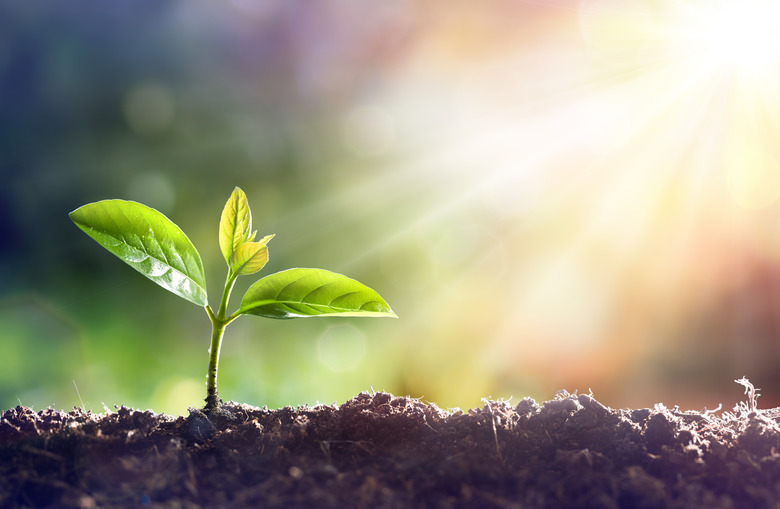Chemical Ingredients Of Photosynthesis
Every living thing needs energy in order to survive. Humans and other animals get energy from the food they eat, but what about plants and trees? Green plants use energy from the sun to create their own food in a process called photosynthesis. Because they are able to do this, plants are referred to as producers, to distinguish them from animals, which are known as consumers. Producers and consumers are interdependent, each providing something vital the other needs.
Photosynthesis
Photosynthesis
Photosynthesis is a process by which a plant uses energy from the sun, water from the hydrosphere and parts of the air we breathe in order to produce glucose, a complex sugar molecule. Plants can connect these sugar molecules together in a longer, even more complex for, called a starch, to be stored for later use. The energy itself is stored in the chemical bonds that hold the starch together. When the bonds are broken, the energy is used by the plant to grow and reproduce.
Chlorophyll and Chloroplasts
Chlorophyll and Chloroplasts
All of this amazing process takes place inside the cells of a plant, primarily in its leaves. Tiny organelles, called chloroplasts, are where photosynthesis occurs. These chloroplasts contain green pigment called chlorophyll, which gives plants their characteristic green color. When the leaves on a tree change color, it is because its season of growth has ended. The plant has temporarily stopped producing chlorophyll, and other pigments in the leaves become visible.
Chemical Input
Chemical Input
Carbon, hydrogen, and oxygen are the chemical ingredients necessary for photosynthesis to take place. Hydrogen and oxygen both come from the water in the hydrosphere. Carbon and oxygen come from the carbon dioxide that animals and humans breathe into the atmosphere. Although it is not a chemical ingredient, without energy from the sun, none of this process could occur.
Chemical Output
Chemical Output
When a plant performs photosynthesis, the main product of the process is glucose, a sugar molecule with the chemical formula C6H12O6. The waste products of photosynthesis are water, which is returned to the hydrosphere, and oxygen, which is returned to the atmosphere. Although we can be grateful for the oxygen which enables us to survive, the plant does not produce it with us in mind. It is simply a side-effect of successful food-making for the plant.
Interdependence
Interdependence
Animals and plants are completely interdependent. When we breathe, we take in oxygen for our bodies and expel carbon dioxide and water vapor back into the atmosphere. This process is known as respiration. When plants take in and give off gases, the process is called transpiration. They take in carbon dioxide, and expel oxygen and water vapor back into the atmosphere. Plants and animals, each needs the other to provide a necessary element for life.
References
Cite This Article
MLA
Wyatt, Mary L.. "Chemical Ingredients Of Photosynthesis" sciencing.com, https://www.sciencing.com/chemical-ingredients-photosynthesis-5502301/. 22 November 2019.
APA
Wyatt, Mary L.. (2019, November 22). Chemical Ingredients Of Photosynthesis. sciencing.com. Retrieved from https://www.sciencing.com/chemical-ingredients-photosynthesis-5502301/
Chicago
Wyatt, Mary L.. Chemical Ingredients Of Photosynthesis last modified August 30, 2022. https://www.sciencing.com/chemical-ingredients-photosynthesis-5502301/
